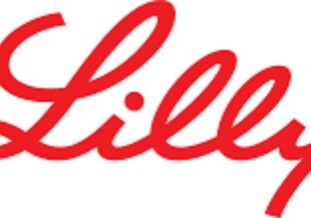Recent News
Eli Lilly Revenue Boosted by New Drug Sales


The earnings fell short of analysts’ expectations, sending Lilly’s shares down 1.9% to $76.45 in late-morning trading Tuesday.
The Indianapolis company has bet on its own research pipeline to generate new products to help offset generic competition for older drugs, rather than pursue large-scale acquisitions for growth as some of its rivals have done.
But that has led to higher costs for running large clinical trials testing drugs including experimental treatments for Alzheimer’s disease and migraine headaches. Lilly said first-quarter R&D expenses rose 17% on late-stage drug development programs.
Lilly Chief Executive John Lechleiter said much of the revenue growth in the quarter came from sales of six products the company has introduced since the beginning of 2014, including the diabetes treatment Trulicity and the gastric-cancer drug Cyramza.
“We’re making good progress launching new products,” Dr. Lechleiter said in an interview.
But Lilly still generates a large portion of its revenue from older drugs, which can hamper overall sales growth when a drug has disappointing sales. Sales of Lilly’s top drug, Humalog insulin for diabetes, dropped 11% due to higher-than-expected rebates to customers. In a research note, Leerink Partners analyst Seamus Fernandez called the decline “somewhat concerning.”
Dr. Lechleiter said he doesn’t expect the negative trend to continue, and that Humalog should return to sales growth for the rest of the year.
Lilly also cut its profit forecast for the year, citing the Venezuelan financial crisis and a resulting $203.9 million accounting charge. Lilly now expects annual earnings per share of $2.68 to $2.78, down from the $2.83 to $2.93 it previously expected.
Still, the company increased its revenue guidance, saying it now expects annual revenue of between $20.6 billion and $21.1 billion, up from the $20.2 billion to $20.7 billion it predicted previously.
Sales of Humalog fell to $606.3 million. Recently released drugs, including diabetes treatment Trulicity and cancer drug Cyramza, accounted for sales of $325.4 million.
Global sales of erectile-dysfunction drug Cialis rose 7% to $576.7 million. U.S. sales increased 31% on higher prices, but international sales partially offset the increase, falling 13% on foreign exchange fluctuations.
Sales in its Elanco animal-drug unit increased 1% to $754.6 million. Lilly bulked up this division by purchasing an animal-health business from Novartis for about $5.4 billion at the start of 2015.
Elanco now generates more than 15% of total Lilly sales, up from less than 10% a few years ago, a sign of rising demand for drugs and vaccines given to pets and livestock. Lilly licensed the rights to an osteoarthritis drug for dogs from Aratana Therapeutics Inc. this week.
“We like this business,” Dr. Lechleiter said. “We’re going to keep that business and I think it represents another good pillar of growth.”
Like many companies that do significant business abroad, Lilly said the stronger U.S. dollar hurt sales. Adverse exchange rates shaved 3% off the top line but increased volume was responsible for 7% revenue growth with an additional 1% growth due to higher prices.
In all, Lilly reported a profit of $440.1 million, or 41 cents a share, down from $529.5 million, or 50 cents, a year earlier. Excluding the Venezuelan charge and other certain items, earnings per share fell to 83 cents from 87 cents.
Revenue grew 4.7% to $4.87 billion. Analysts projected 85 cents in adjusted per-share profit and $4.82 billion in sales.
PETER LOFTUS and AUSTEN HUFFORD
www.wsj.com
Check out our latest video
Exploring our target industries
At Davalyn, our tenured team of niche-focused talent acquisition experts takes on the hiring challenges of a diverse and growing set of industries. Make our perspectives your most powerful recruitment and retention resource.

